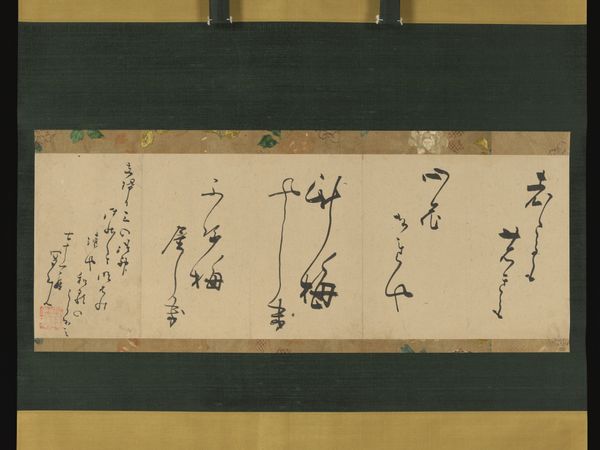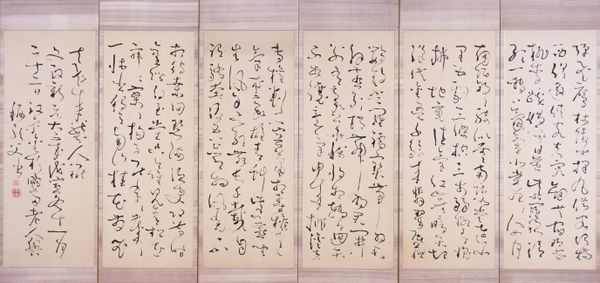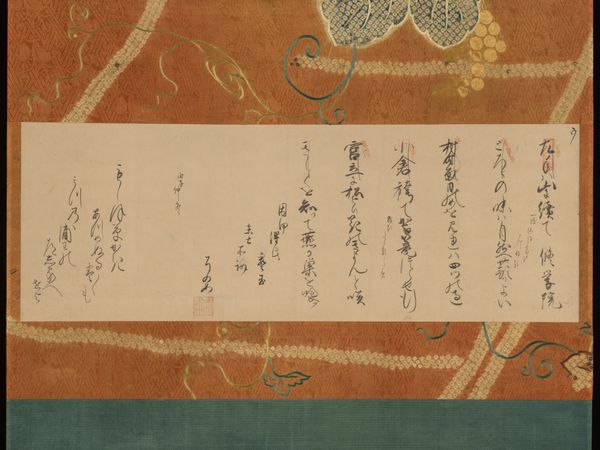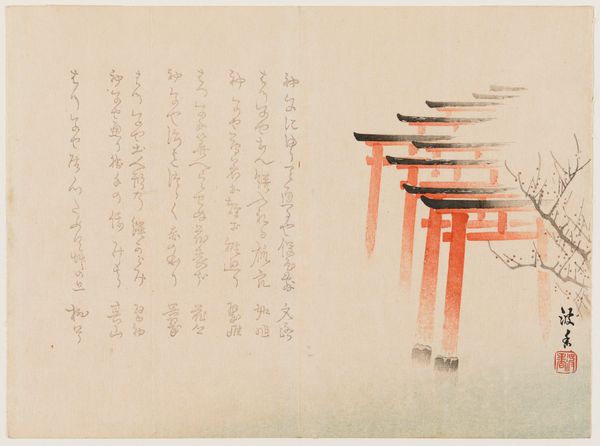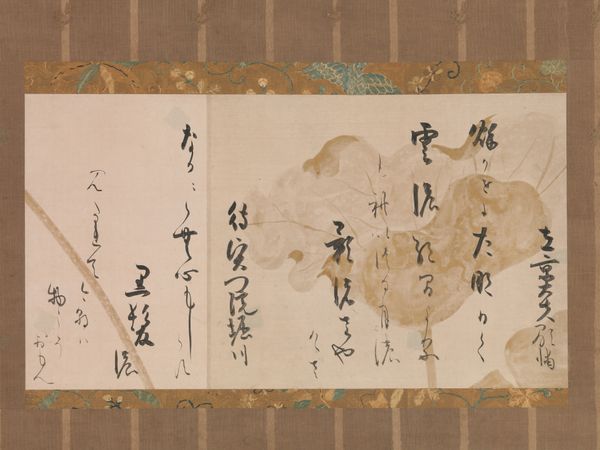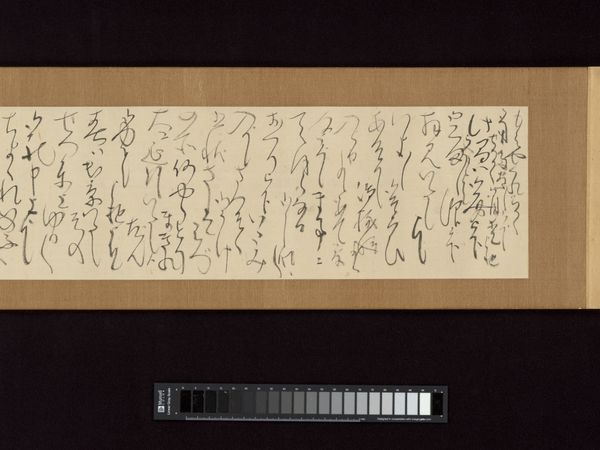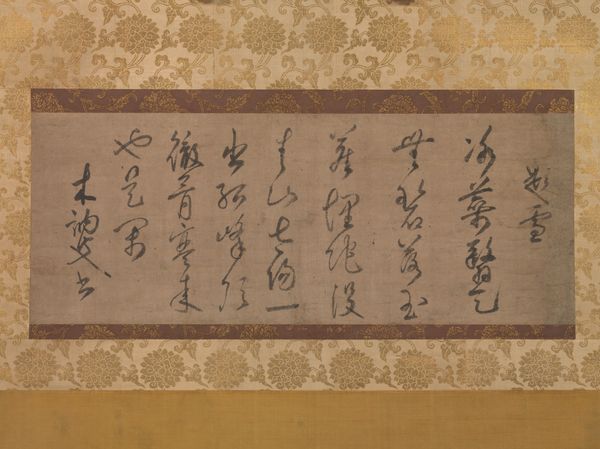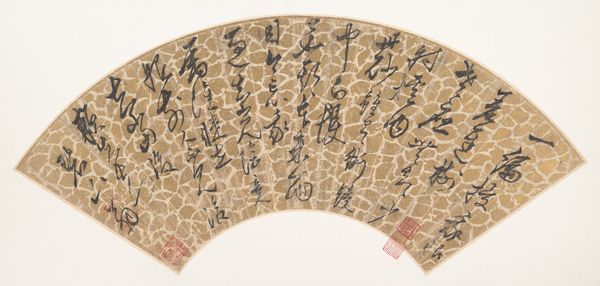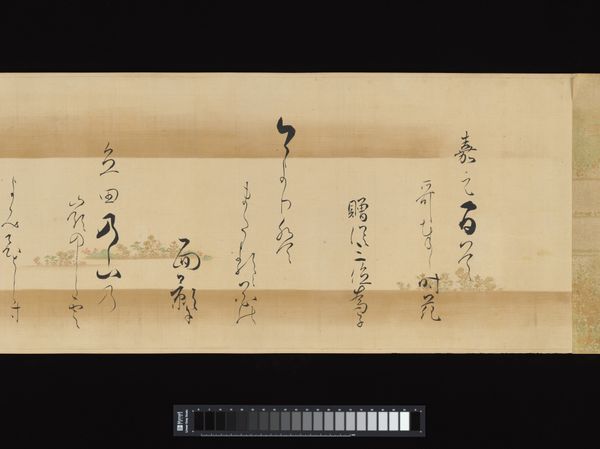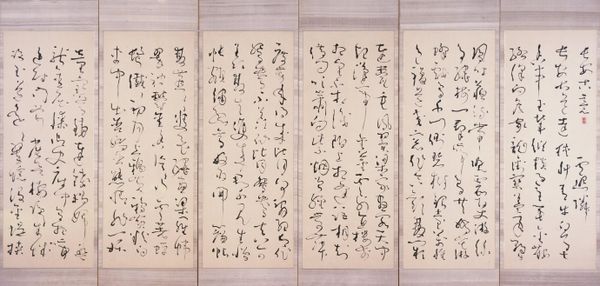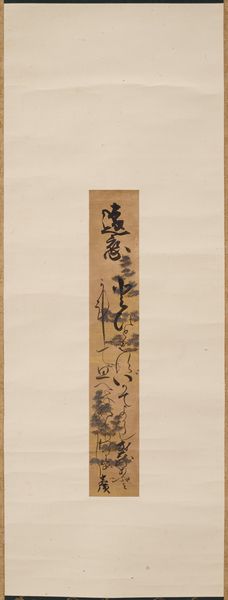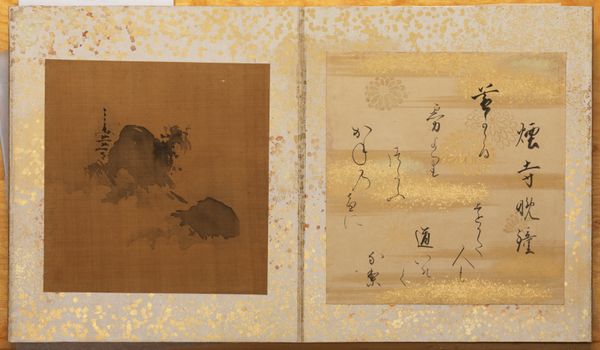
drawing, paper, ink
#
drawing
#
light coloured
#
asian-art
#
etching
#
paper
#
ink
#
watercolor
#
calligraphy
Dimensions: Image: 5 11/16 × 22 3/16 in. (14.5 × 56.4 cm) Overall with mounting: 35 1/16 × 24 in. (89 × 61 cm) Overall with knobs: 35 1/16 × 26 in. (89.1 × 66 cm)
Copyright: Public Domain
Editor: Here we have “Letter” by Tanomura Chokunyū, created sometime between 1833 and 1899. It's ink and watercolor on paper. I am struck by the blend of abstract shapes and traditional calligraphy. What draws your eye in this work? Curator: As a materialist, I see in this letter more than just text. I'm drawn to the process and materials themselves. Consider the labor: grinding the ink, preparing the paper, the careful, controlled movements required to produce each stroke. The tools themselves--brushes, inkstones--speak to a tradition of craft. Editor: So, you're looking at the means of production, how it's made, right? Curator: Precisely! And how that relates to the social context. Who was Tanomura Chokunyū? Who was the intended recipient? Letters weren't mass-produced then. Each one represents a unique exchange, a deliberate act of communication requiring significant resources and time. Editor: It is like a performance in ink, recorded in time. But what of the visual? Isn’t the composition significant? Curator: Of course. But even the composition relates to material concerns. The ink’s consistency, the paper’s absorbency – these dictated the artist’s choices. It is a negotiation between intent and the inherent qualities of the materials. Consider, too, how this letter circulated. Was it delivered by hand, or by some other means? Its journey, its potential exposure to the elements, is all part of its material history. Editor: That makes me rethink the "preciousness" we often ascribe to art. It’s about utility too. Curator: Absolutely! And even consumption. The recipient actively engages with the letter, decoding its message, handling the very materials we're discussing. "Letter" isn't just an aesthetic object; it is a social artifact. Editor: It changes my view of it from a static object to part of a historical exchange. Curator: Indeed. By examining the materiality and process, we gain insight not just into the art, but the society that produced it. Editor: That gives me a completely new angle to appreciate works like these! Thanks!
Comments
No comments
Be the first to comment and join the conversation on the ultimate creative platform.
